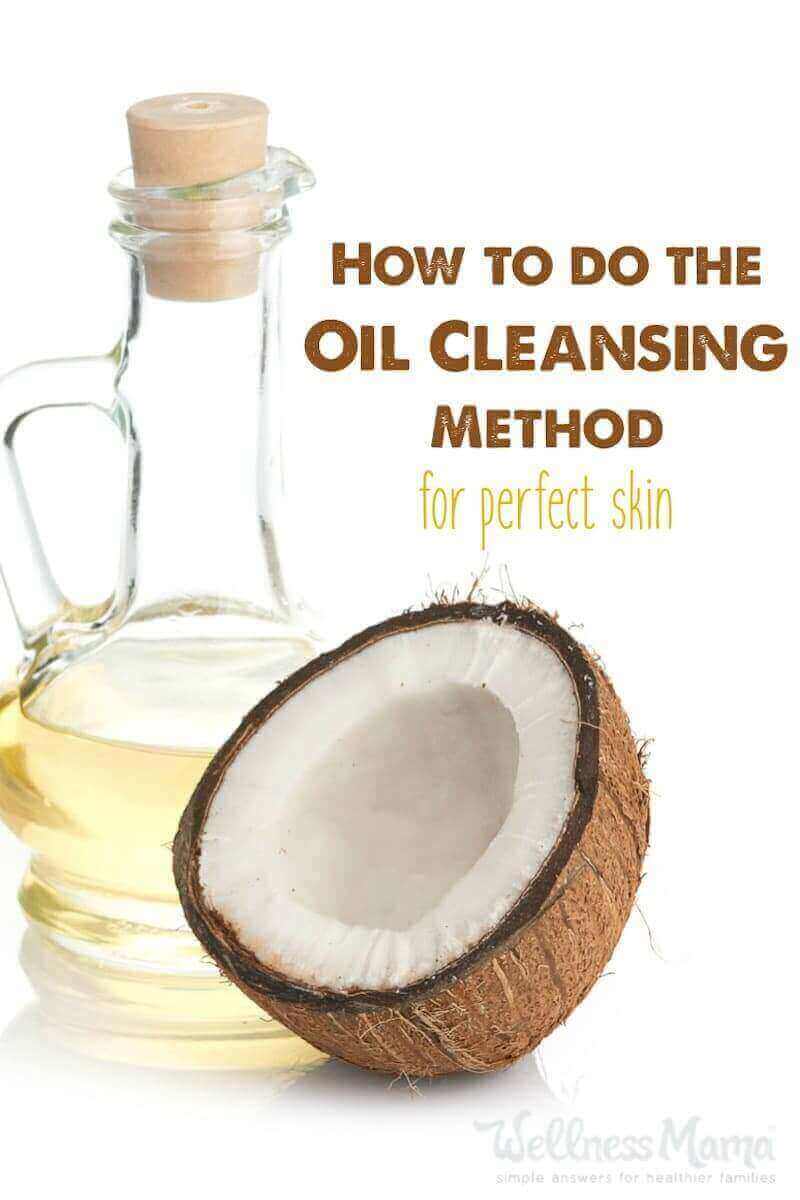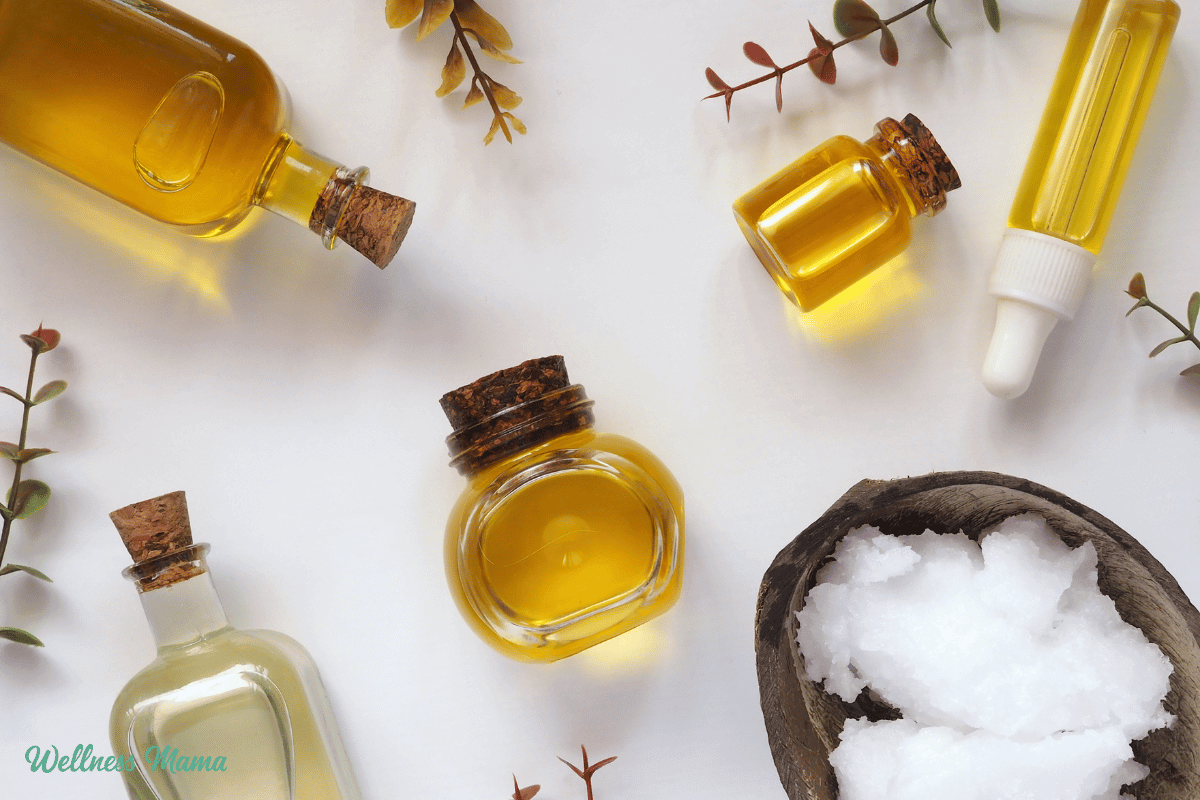I’ve written about many natural beauty ideas before, but oil cleansing may be one of the simplest. It’s one of the most effective natural beauty tips I’ve found for healthy, clearer skin. Here’s how to add it to your skincare routine and why it can work so well!
I must admit that I was sceptical before I tried the oil-cleansing technique. My skin is naturally oily and I wasn’t sure it would work for me. I also had very acne-prone skin when I was younger, and was afraid that a method like this would bring back the acne… I was wrong!
What Is Oil Cleansing?
The idea that natural oils can be used to cleanse skin gently is not only logical, but it also makes perfect sense. The basic idea is to use natural oils in a specific combination to cleanse and naturally balance the skin’s natural oils. This creates skin that is more nourished, moisturized and healthy than face wash based on soap.
The idea behind oil cleansers is to use oil as a massage oil and cleanse your skin. The carrier oils are a great way to dissolve impurities that have been stuck in the pores. The warm water will open the pores and allow the dirt and sebum be removed easily.
OCM is a popular product among those who claim it helps with blackheads, whiteheads, sensitive skin and oily skin. Your skin type will determine the oil that you use.
Natural Makeup Remover
Oil cleansing is also effective for removing makeup that contains oil. You can use it to remove mascara, foundation powder and eye makeup. Check out these other DIY makeup removers.
Does Oil Cleansing Work?
This is the part I’m most excited to share! I experienced ZERO breakouts in my third trimester, which is when my skin goes a bit hormonally crazy. I used oil cleaning for several months to avoid blemishes, and remove makeup.
After I began using oil cleaning, my skin became worse for about one week. Most resources I’ve seen suggest this is a detox reaction as impurities are pulled from the skin. It was definitely this for me. My skin improved gradually after that. After 3-4 weeks, I was using only oil cleansing and had no excess oil or dryness.
I asked a few friends and family who use oil cleansing. how it’s worked for themSome even noted that the combination of oil cleansing and taking gelatin daily has been the best anti-aging treatment! Others have even said that the combination oil cleansing with gelatin taken daily is the best anti-aging remedy!
Oil Cleansing Ingredients
You can try oil cleansing to see for yourself the results. All you need is a washcloth and some natural oils!
The most commonly used oils include Castor oil Any natural oil can be used, including olive oil. Castor oil helps to remove impurities because it is naturally astringent. It is therefore ideal for combination or oily skin, and even dry skin if used in smaller amounts. While I use castor oil packs to help detox, it can be too harsh if it’s used undiluted as an oil cleanser.
You’ll mix the castor oil with another carrier oil (or several) that match your skin type. I also like to use olive oil. However, sunflower, safflower and even coconut oil will work.
What are the best oils for oil cleansing?
Some oils, such as rosehip and castor oils, are more drying than others. Some oils, like olive oil, can be too heavy on skin that is naturally oily. Here are a few oil cleansing options.
Base Oils
Use these oils in greater quantities along with castor oil.
- Avocado oil – Good for combination, dry, or mature skin.
- Grapeseed oil – Lightweight oil that’s good for oily or acne-prone skin.
- Sunflower oil – A lighter oil that’s good for combination or oily skin.
- Sweet almond oil – Good for oily, sensitive, or combination skin types.
- Coconut oil – This works really well for some and not so well for others. It can be drying and pore-clogging for some people, especially those with acne. It is used in some skincare products.
- Olive oil – My favorite oil to use. The oil is great for mature, dry skin. I also found that it was effective for my slightly greasy skin. Be sure to get real olive oil though since most of what’s in the store is mixed with other, cheaper oils.
Specialty Carrier Oils
These are great for adding a bit more customization to your OCM mix. They’re a more concentrated source of skin-loving nutrients. Add a small amount to your oil mixture for maximum benefits.
- Rosehip oil – This astringent oil is great for more oily skin types but in smaller amounts it’s also a good anti-aging oil. Vitamins A and C are present in this fruit, which helps with wrinkles, scar tissue and blemishes.
- Argan oil – Packed with vitamins A and E, antioxidants, and linoleic acid. It’s emollient, helps protect against free radical damage, is anti-aging and moisturizing.
- Jojoba oil – Similar to skin’s sebum, jojoba has vitamins E and B as well as minerals. It won’t clog pores and it’s great for all skin types.
- Essential oils – While these aren’t a carrier oil, they deserve a mention. These oils have additional benefits for the skin, including anti-aging and inflammation. My favorites include lavender, sweet orange and cedarwood. Add a few drops to your OCM mixture (but avoid the eyes!)).
Want to buy it?: Don’t want to buy the oils yourself and DIY it? This oil cleansing mixture is made by hand and smells amazing. It also works great for oil cleansing.
Oil Cleansing Mixtures
If you’re new to oil cleansing, it may take a few tries to figure out what oil blend works best for you. I used a mix of 3/4 olive oil and 1/4 castor or hazelnut oil and it’s perfect for my skin. You can also try:
- Oily Skin 1/3 Castor oil The following are some examples of how to use Hazelnut oil You can use 2/3 of sunflower, grapeseed or sweet almond oils.
- Combination Skin1/4 castor or hazelnut and 3/4 sunflower, olive, sweet almond or other oils
- Dry SkinAll nourishing oils like avocado oil or olive oil or a very tiny amount of castor/hazelnut added to the nourishing oils.
Start with the recommended amounts for your skin type, and then adjust as needed. As I began, I created very small batches to find the perfect blend for myself.
I’ve also found that even pure coconut oil can work well once the skin has adjusted, though it can be drying on some skin types. One friend uses half and half of Coconut oil The following are some examples of how to get started: Olive oil It works well for her to blend in a mixer and create a creamy product.
Oil Cleansing Tutorial
Now that you know which oils to use, here’s how to do the OCM!
- Pour a quarter of the blend oil into your palm and massage it onto your skin. Massage the oil blend into your dry skin using smooth circular strokes for 1-2 min. If you’re wearing makeup no need to wash it off first!
- Optional: You can leave the oil on your skin for up to ten minutes to clean deeply.
- Put a clean washcloth into very hot water, and then dampen it. Then place the cloth on your face. Steam is created to help remove impurities and oils from the skin. Repeat if necessary.
- Remove any remaining oil using the washcloth. It is still beneficial to have a thin oily layer on your skin.
- Most people don’t need a moisturizer after the adjustment period. If you have dry skin after the adjustment period, reduce the amount of castor oil and moisturize with a lotion.
Oil Cleansing Method FAQs
Oil Cleansing with Acne
It’s normal for it to take a week or so for the skin to adjust. During this period, you may see an increase in oily skin and breakouts as the impurities are removed from your skin. Avoid harsh facial cleanser or soaps as this will prolong the adjustment period.
A clay face mask can be used once or twice weekly to accelerate the detoxification.
The Oils Aren’t Working For me
Even if you don’t have acne-prone skin you may still have an adjustment period. And you’ll likely have to experiment with different oils to find your perfect oil ratio. If you find that your skin becomes too dry, reduce the amount of castor (or rosehip) oil. If it’s way too greasy, try a lighter-weight oil or increase the castor oil used.
If you find your skin really doesn’t like this after a month (and you’ve already tried different oils) then the OCM may not be a good option for your skin.
Cleaning Up Afterward
If you do this in the shower, make sure to clean your shower floor regularly so it doesn’t get slippery! Several readers asked about how to clean a washcloth afterwards. I wash them separately and on hot. You can rinse with vinegar after washing.
Have you tried oil cleansing before? Has it worked for you? Share your experiences below!

